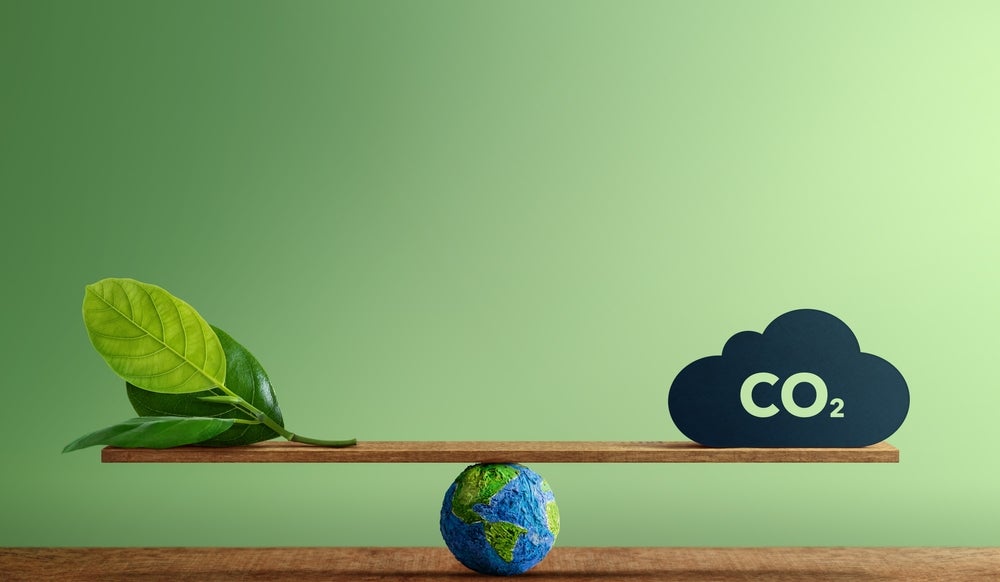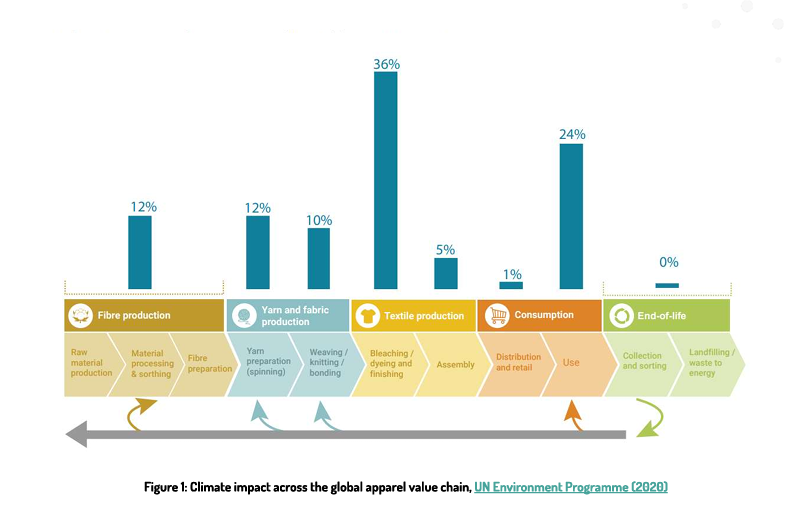
The policy paper T(h)reading a path: Towards textiles waste prevention targets calls out the apparel industry to address the emissions gap and reach targets as set under the Paris Agreement.
The report explains the main climate impact of the fashion and textile industry lies in the production phase.

As a result, it recommends setting real textile waste reduction targets at the EU level, starting with an overall reduction target of at least one-third by 2040 compared to 2020.
Zero Waste Europe’s waste and resources policy officer Theresa Mörsen states: “Evidence shows that even with the foreseen interventions in the textile production chain, there is still a gap of almost 40% of necessary emissions reductions to meet the 1.5 degrees target.”
She adds: “This suggests that the only way forward is to reduce overproduction.”
In fact, the paper points out the EU’s material footprint, in other words the sum of materials from inside and outside the EU needed to produce the goods demanded by the citizens, is above the global average and at highly unsustainable levels.
The report highlights that every year the average European consumes 26kg of textiles and generates approximately 11kg of textile waste. The environmental consequences extend beyond the EU’s borders, as material extraction and production mostly take place outside the EU and exports of textile waste are commonplace polluting soil and water in recipient countries in the Global South.
One feasible indicator for waste prevention, as ZWE explains, would be to measure the weight of new textile products put on the market per capita per year.
Mörsen says: “Since member states’ waste prevention programmes have not delivered any tangible waste reduction over the past 10 years, we suggest setting concrete targets, starting with textile waste in the current revision of the Waste Framework Directive. We propose an overall reduction target for textile waste of at least one-third by 2040 in comparison to 2020. It is essential to set policy on the right trajectory for substantial waste reduction as soon as possible.”
The EU’s Waste Hierarchy laid down by the Waste Framework Directive prioritises waste prevention over other methods like reuse, recycling, and recovery. While the Waste Framework Directive obligates countries to take measures against waste, the proposed revision of the Directive fails to include prevention targets for textiles, which ZWE says is undermining the Waste Hierarchy’s core principle.
Policy recommendations
ZWE believes setting legally binding targets, similar to other circular measures like recycling is therefore key to driving textile waste prevention and alleviating the environmental burden of, in particular, production. It outlines policy recommendations and calls on the European Commission to:
- Introduce textile waste prevention targets during the ongoing revision of the Waste Framework Directive. This will encourage member states to ensure the effectiveness of circular measures in their waste prevention plans. Alternatively, the European Commission should by the end of 2024 present to the co-legislators a legislative proposal including waste prevention targets for textiles in accordance with Article 9.9 of the WFD
- Develop a set of specific indicators for the monitoring of textile waste prevention
- Allocate funds from the prospective Extended Producer Responsibility (EPR) scheme to textile waste prevention measures
- Mandate reporting on how much textile is collected either separately or in mixed waste in a systematic and harmonised manner across the EU
- Produce guidance for the implementation of policy instruments that are most suitable for achieving the objectives of Article 9.
ZWE concludes the “circular economy is not an end in itself but a tool to lower absolute resource consumption and, therefore, must be in tune with the waste hierarchy.”



